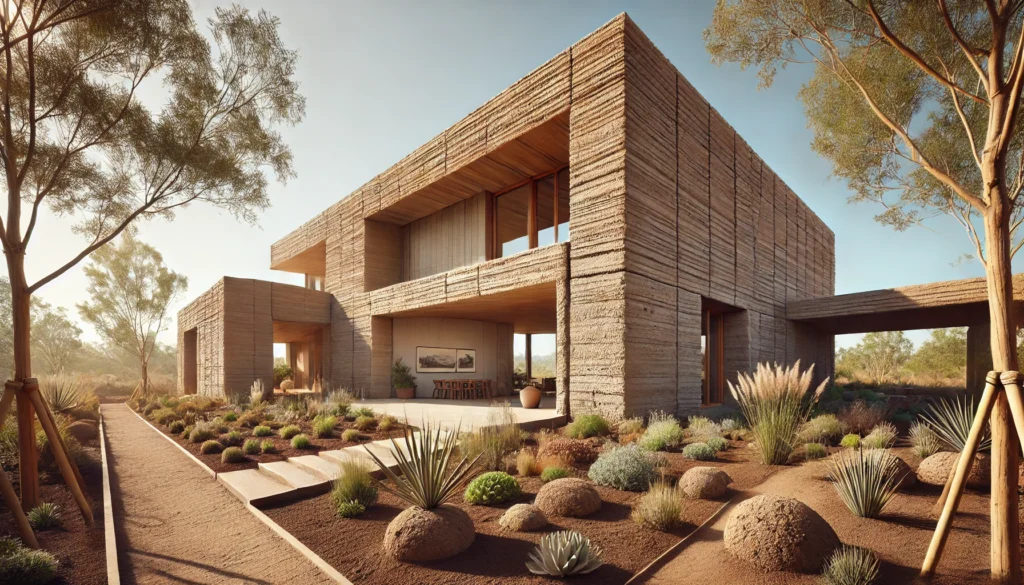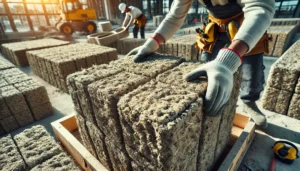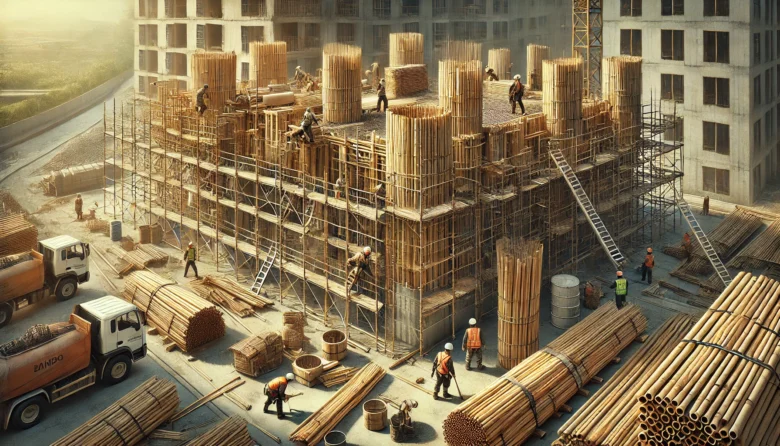When you think about the future of construction, what comes to mind? For many, it’s the gleaming skyscrapers, innovative architecture, and smart homes. However, an equally important aspect is gaining momentum: sustainable building materials. Faced with climate change, resource scarcity, and environmental harm, sustainable building materials have become essential rather than optional. This blog will delve into the intriguing world of eco-friendly construction, its importance in India, and how we can help create a greener planet through wiser building choices.
Understanding Sustainable Building Materials
Sustainable building materials have a minimal environmental impact throughout their lifecycle—from extraction and processing to use and disposal. They are designed to reduce waste, lower energy consumption, and promote health and well-being. Key characteristics include renewability, recyclability, durability, and low toxicity.
Bamboo: Often dubbed the “green steel,” bamboo is an excellent sustainable material. It’s fast-growing, incredibly strong, and can be harvested without killing the plant. In India, especially in the northeastern states, bamboo is extensively used for construction. Companies like Moso Bamboo India are leading the way in commercializing bamboo products for sustainable building solutions.
Recycled Steel: Steel is highly durable and recyclable. Using recycled steel in construction saves significant energy compared to producing new steel. Indian companies like Tata Steel are pioneering recycling and producing eco-friendly steel products.

Rammed Earth: This traditional building method, using raw materials like earth, chalk, lime, or gravel, is seeing a resurgence. It’s not only sustainable but also offers excellent thermal mass, which helps in regulating indoor temperatures. The Auroville Earth Institute in Tamil Nadu is a notable organization promoting rammed-earth construction.
Innovative Sustainable Materials
Scientific and technological progress has resulted in the creation of new sustainable materials that have the potential to transform the construction sector.
 Hempcrete: Composed of the inner fibers of the hemp plant mixed with lime, hempcrete is lightweight, durable, and provides excellent insulation. It’s also carbon-negative, meaning it absorbs more CO2 than it emits. In India, companies like Hempcrete India are working on making this material more accessible for builders.
Hempcrete: Composed of the inner fibers of the hemp plant mixed with lime, hempcrete is lightweight, durable, and provides excellent insulation. It’s also carbon-negative, meaning it absorbs more CO2 than it emits. In India, companies like Hempcrete India are working on making this material more accessible for builders.
Mycelium: This is the root structure of mushrooms, and it can be used to create strong, lightweight, and biodegradable building materials. It’s a growing field of study with the potential to replace conventional materials like plastic and foam.
Ferrock: A carbon-negative alternative to concrete, ferrock is made from recycled steel dust and ferrous rock. It’s incredibly strong and absorbs CO2 during its drying process. While still in the experimental phase, it’s a promising material for sustainable construction.
Case Studies and Examples
Jaipur’s Amber Fort: Although not built with modern sustainable materials, the Amber Fort in Rajasthan is an excellent example of ancient sustainable architecture. Constructed with locally sourced sandstone and marble, it showcases how traditional methods can inspire modern sustainable practices.
The Indian Green Building Council (IGBC) has endorsed numerous eco-friendly buildings throughout India. One notable example is the CII-Sohrabji Godrej Green Business Centre in Hyderabad. It incorporates sustainable materials, energy-efficient systems, and water conservation measures, setting a benchmark for green buildings in India.
Benefits of Sustainable Building Materials
Environmental Impact: Sustainable materials help reduce buildings’ carbon footprint. They lower greenhouse gas emissions and decrease reliance on non-renewable resources.
Health Benefits: A lot of traditional building materials release volatile organic compounds (VOCs) that can be detrimental to human health. Sustainable materials, such as low-VOC paints and finishes, contribute to healthier indoor environments.
Economic Advantages: While some sustainable materials might have higher upfront costs, they often lead to savings in the long run through lower energy bills, reduced maintenance costs, and increased building lifespan.
Challenges and Solutions
Despite their benefits, sustainable building materials face several challenges:
Cost: Initial costs can be high. However, incentives and subsidies from the government can help mitigate this. The Indian government’s various schemes promoting green buildings and energy-efficient construction are steps in the right direction.
Awareness: Many builders and consumers need to know the benefits of sustainable materials. Educational programs and awareness campaigns by organizations like the Green Building Council can be crucial.
Supply Chain Issues: Ensuring a steady supply of sustainable materials can be challenging. Strengthening the supply chain through better logistics and increased local production can help address this issue.
Conclusion
The science of sustainable building materials is vital for constructing a future that is innovative, beautiful, environmentally responsible, and healthy. By embracing materials like bamboo, recycled steel, and hempcrete, we can significantly reduce our environmental impact and promote a greener, healthier world. Let’s take inspiration from ancient and modern examples and commit to building sustainably. Together, we can make a substantial difference, one brick at a time.
Author’s Note
As we move towards a more sustainable future, we must make informed choices in every aspect of our lives, including construction. By choosing sustainable building materials, we can help ensure a healthier planet for future generations.
G.C., Ecosociosphere contributor.




